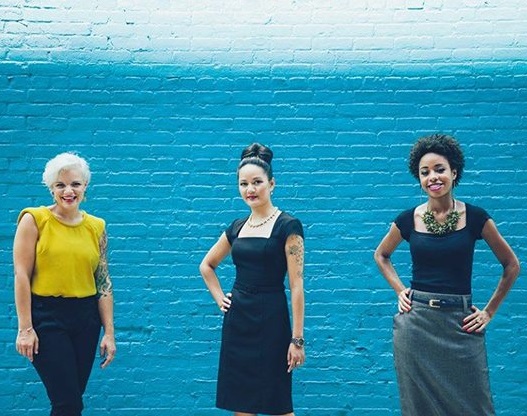The U.S. student debt: A debate between retirement and working for life

What is the future of college affordability?
Though the Biden administration has made historic strides in passing student loan forgiveness initiatives, ongoing lawsuits by Republican-majority states and a possible change of White House leadership this election year threatens their survival.
Meanwhile, the lifting of pandemic-era freezes to federal student loan payment forces borrowers nationwide to choose once again between greater debt or affording basic needs — underscoring the importance of forgiveness programs.
At an Ethnic Media Services briefing, student loan experts and a borrower who got over $100,000 in student loans forgiven explained what forgiveness programs have been launched and expanded under the Biden administration, which have been cut, and what’s next for student loans.
Student debt relief under Biden
The Biden administration has approached debt relief in two ways: through broad relief, by approving “upwards of $153 billion in student loan forgiveness for around 4.3 million borrowers,” and through targeted relief, by reforming existing programs, said student loan lawyer and author Adam Minsky.
Efforts to provide relief have met with staunch political opposition, however. The administration’s first attempt would have forgiven up to $20,000 in federal student loan debt for millions of borrowers per the Heroes Act of 2003, which let the Education Department enact waive federal loan program regulations “in response to economic harm caused by a national emergency — in this case, the pandemic,” Minsky said.
This was challenged by a coalition of Republican-majority states led by Nebraska and Missouri, and was struck down by the conservative-majority Supreme Court last June on the grounds that mass debt forgiveness was not expressly mentioned in the act.
The administration’s current, second attempt at broad relief involves a separate legal authority — the Higher Education Act, “which does expressly allow for the waiver or cancellation of student loan debt, although it’s only been used in limited circumstances to date,” explained Minsky.
“The program could go live for borrowers as early as the fall, but most people expect this will be challenged in court as well, though it stands a stronger chance of surviving a legal challenge.”
Other, targeted initiatives include the IDR Account Adjustment giving forgiveness credit to borrowers unable to pay income-driven loan plans in 20 or 25 years; the Public Service Loan Forgiveness (PSLF) program providing forgiveness in as little as 10 years to borrowers who work for nonprofit or government organizations; and the Save Plan, exempting borrowers earning below a certain income for payment and shortening the forgiveness timeline for some earning above it.
Many of these initiatives have also met with opposition. For instance, the Save Plan, in which at least eight million borrowers have enrolled, “is subject to two new, separate lawsuits brought by 18 Republican states, including some of those that blocked Biden’s first mass debt relief plan,” said Minsky.
“A common criticism is that these programs are unfair to people who have already paid their debt,” he added.

The landscape for borrowers
“We’re seeing significant government actions to address the student debt crisis, but the effect of this is that borrowers are confused about whether or not they will be receiving forgiveness, what the parameters are, who is eligible, and what the consequences are for non-payment,” said Michele Shepard Zampini, senior director of College Affordability at The Institute for College Access and Success.
In a decisive election year, tens of millions of borrowers are also transitioning from the unprecedented pandemic payment clause — which, through March 2020 through fall 2023, exempted federal student loan payment and interest accrual — back into payment.
For many of these borrowers, “monthly payments are too high for them to afford. Basic living expenses like rent, food, child care, health care, or transportation are competing with loan bills,” Zampini explained. While 92% to 93% of outstanding student debt is federal, many of those with non-federal, private or state loans “are not eligible for these relief initiatives at all.”
The impact of student debt and relief
For borrowers with snowballing interest, debt relief can be the difference between retiring at all and working for life.
“In 1990 I moved to Florida from Venezuela, where I was a physician with a master’s degree in ear, nose and throat surgery,” said Virginia Brown, a 72-year-old recently retired mental health social worker. “I spoke English, I was a citizen, and I couldn’t find a good job. Finally, I went to school for professional mental health counseling — I always loved helping people.”
“Already having a master’s, I couldn’t go back to a bachelor’s or find an affordable alternative, so I took out a loan to go to Orlando Rollins, a private college,” she continued. “People said ‘You’re going to get into all this debt,’ but it was the only choice.”
“Afterward I had two, three jobs at a time working in nonprofit social service, but interest grew the debt beyond $100,000 even as I was paying. Day-to-day, I had to choose between paying up to $900 a month on a loan or the power bill, and I couldn’t afford moving closer to my family in Jersey City, where I am now,” she said.
“I found out I was able to get my debt forgiven in 10 years through the PSLF program, by transferring my loan from private to federal and continuing to work in nonprofits,” Brown explained. “In mid-2021 I got an email saying it was forgiven, and I couldn’t believe it. I sent it to my son wondering if I was dreaming.”
“I had jobs that I liked, providing an important social service to the community, but due to student loans I was stuck geographically and professionally,” she added. “Without that relief, I wouldn’t have been able to retire or live close to my family. Debt forgiveness is life-changing.” — Ethnic Media Services














